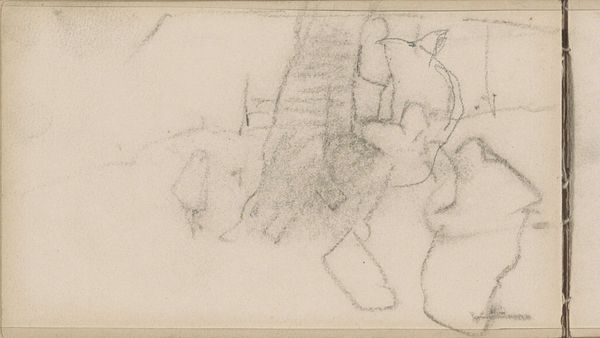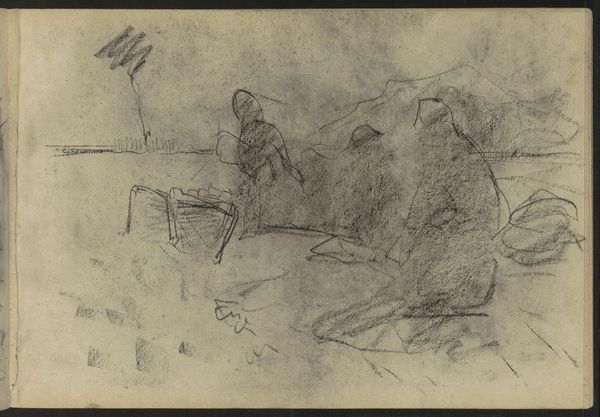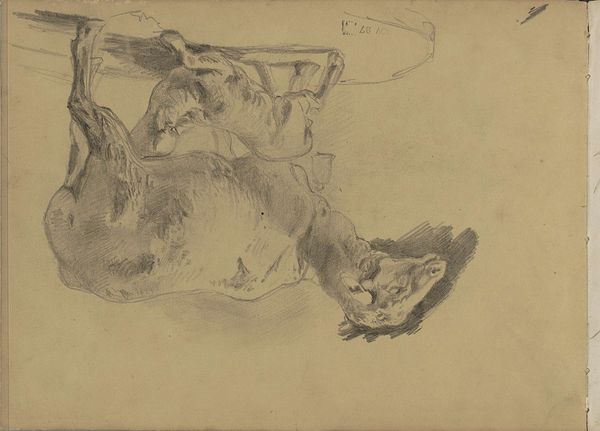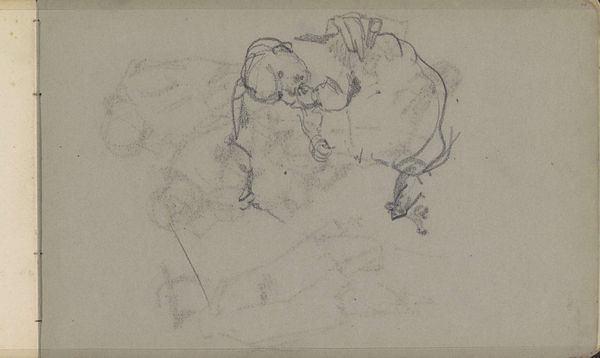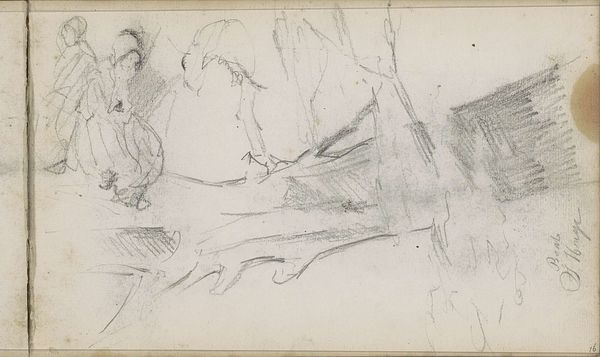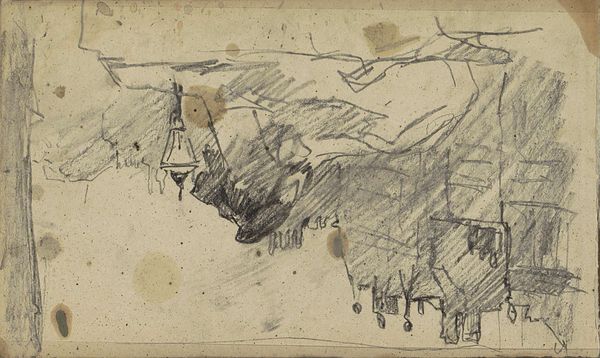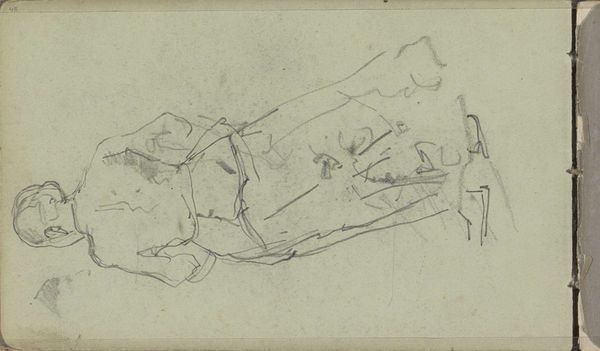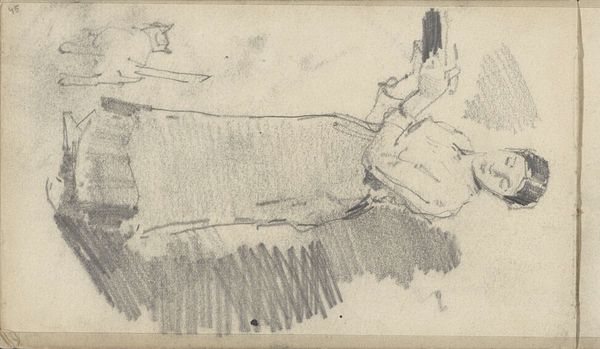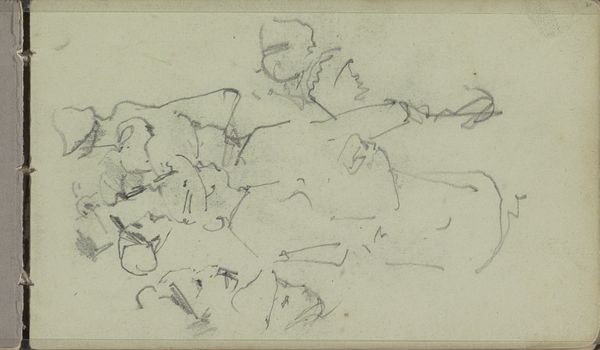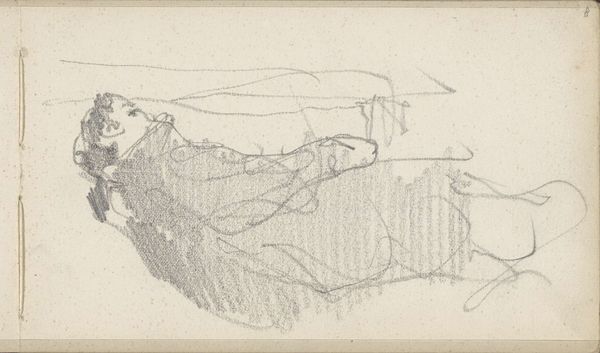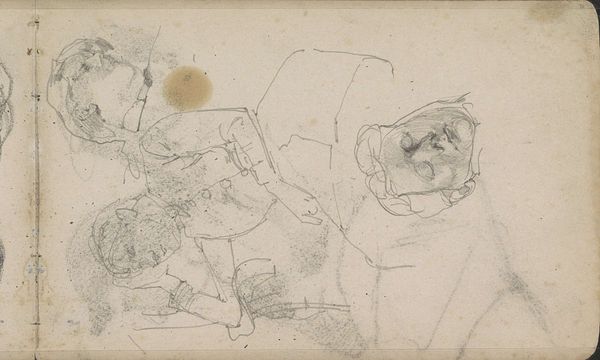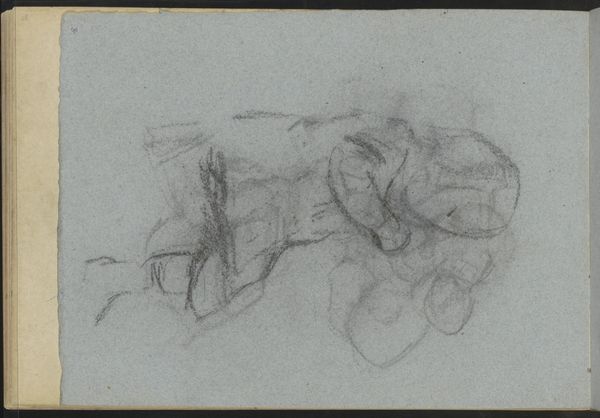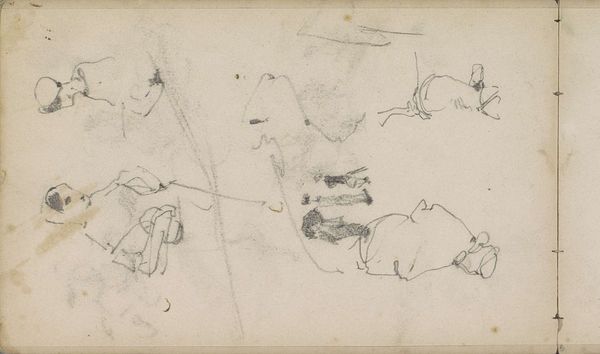
drawing, pencil
#
portrait
#
drawing
#
pencil sketch
#
dog
#
pencil
#
sketchbook drawing
#
realism
Copyright: Rijks Museum: Open Domain
Editor: Here we have "Liggende hond," or "Reclining Dog," a pencil drawing by George Hendrik Breitner, dating from around 1880 to 1882. It feels very intimate, like a quick sketch from a personal notebook. What strikes you about this piece? Curator: The drawing exhibits Breitner’s masterful handling of line and form. Notice how the varying pressure of the pencil creates a sense of depth and volume, particularly in the dog's hindquarters and head. The composition, although seemingly casual, demonstrates a keen understanding of spatial relationships. How does the texture of the paper itself contribute to the overall aesthetic? Editor: I hadn't really considered the paper, but now I see how its subtle grain adds a certain softness to the image, contrasting with the sharper pencil lines. Do you think the unfinished quality of the sketch detracts from the artwork at all? Curator: Quite the opposite. The unfinished nature allows us to witness Breitner's process. It reveals his focus on capturing the essence of the subject – the weight and form of the reclining dog – rather than striving for photographic realism. One could even interpret the negative space as integral, defining the form of the subject through its very absence. How does this affect your interpretation of the piece? Editor: That's a really interesting point! It makes the dog feel more present somehow, like it's about to move at any moment. I came in thinking this was just a simple sketch, but I see how Breitner's skill with composition elevates it. Curator: Exactly. Through line, form and materiality, Breitner conveys the vital characteristics of this work beyond the mere representation of the figure. I think we've both gleaned some valuable insight here today!
Comments
No comments
Be the first to comment and join the conversation on the ultimate creative platform.
